15% off experiences up to £250 - Use code 15WHEEL at checkout! - T&Cs apply
Skydiving Experience (1080p)
Other Great Adrenaline Experiences
Should I buy this skydiving experience?
Who it's for
Skydiving is one of those classic 'bucket list' experiences. Not much can beat the adrenaline rush of a parachute jump. Of course, you'll need to have a head for heights and a whole lot of guts, but those who have done a jump tell us it's one of the best things they've ever done. Definitely top 10 of crazy extreme sports!Who it's not for
The skydive instructors are all very good at being encouraging and a few pre-jump nerves are normal. But if you're going to be frozen rigid with absolute fear, parachute jumping from high in the air probably isn't for you. You can still get that freefall sensation without the altitude on an indoor skydiving experience !Skydiving FAQs
- Can I do a skydive for charity?
- Can I go skydiving whilst pregnant?
- Can you skydive solo when it's your first time?
- Do I need a medical certificate to jump?
- Do I need to be insured to do a sky dive experience?
- How do I get up there?
- How fast will I go?
- How fit do I need to be to do a parachute jump?
- How long does the plane flight take?
- How long will I be in the air for after jumping out of the plane?
- How much teaching will I need for a tandem parachute jump?
- Is it called accelerated freefall because you go faster?
- What are the age restrictions?
- What are the weight limits for parachuting?
- What do I wear for the skydive?
- What has air space got to do with parachuting?
- What height will I be jumping out at?
- What is a drop zone?
- What is an accelerated freefall course?
- What is static line parachuting?
- What's the difference between skydiving and parachute jumping?
- Where can I do a skydiving experience near me?
- Will my skydive experience day be cancelled if it's raining?
Can I do a skydive for charity?
Yes. Skydiving is a really popular sponsored activity to do. Whilst we don't get involved in the fund raising side of things, many of our customers buy their skydive voucher from us with the intention of doing it to raise money for a good cause. Simply buy your voucher, set up your fundraising page and away you go!
Can you skydive solo when it's your first time?
Yes you can. By booking onto a static line parachute jump, you will spend around six hours on the ground learning your craft, before making your solo jump. The canopy deploys automatically and you're in communication with instructors at all times by radio, but you will be jumping solo! On the accelerated freefall, it's a full day of training and then a jump from 10,000-15,000ft with two instructors literally holding on to you.
Do I need a medical certificate to jump?
Normally no, but you do need to be aware of all the advice, rules and regulations regarding any health or medical conditions. If there are any doubts on your fitness, you will be asked to provide a valid medical certificate from a doctor specifying that you are OK to jump.
Do I need to be insured to do a sky dive experience?
There's no legal obligation to be insured when you do a parachute jump. Having said that, many skydive centres do offer personal injury insurance as an option. You can opt for this when booking your date or when you register on the day of your sky dive experience. The fee for this will be payable locally.
How do I get up there?
You and your instructors will be taken up to the jump height in an aeroplane, which means when you go parachuting you get two adrenaline experiences in one - the jump and flight up there! Operators use aircraft such as the Cessna Caravan, which is a popular transport plane for skydive centres.
How fit do I need to be to do a parachute jump?
Health and fitness advice and regulations are pretty in-depth when it comes to parachute jumping. Our operators all provide you with a information pack that goes through everything you need to be aware of when it comes to your state of health. For example, those with certain respiratory and heart conditions wouldn't be able to jump. And if you've dislocated your shoulder in previous years, that also might restrict you from doing a skydive. Please don't hesitate to contact us if you need anything clarifying regarding health and fitness.
How long will I be in the air for after jumping out of the plane?
On tandem jumps and accelerated freefall courses it's all about the freefall. You will be falling through the air without the canopy open for between 40 and 50 seconds. When you reach around 5000ft the canopy will deploy and there's a four to five-minute float back down to solid ground.
How much teaching will I need for a tandem parachute jump?
Tandem jumps are the most accessible way to go skydiving. You'll have a pre-jump briefing and training session that'll last around 20-minutes. You'll get kitted up, meet your instructor and then you'll be hopping onboard the plane for the flight to your jump height.
What are the weight limits for parachuting?
Maximum weights vary according to the type of parachute jump you will be doing. For a tandem parachute jump, for example, the max weight for men is 17 stone (107kgs) and for women it's 15.7 stone (99kgs). Please check in the full details section of each product page for all the info on their weight restrictions.
What has air space got to do with parachuting?
If you hear skydivers talking about airspace, they are referring to whether the dropzone is located in restricted air space, that's to say whether it's in a flight zone governed by air traffic control regulations. The best locations are in unrestricted airspace.
What height will I be jumping out at?
For tandem skydives and accelerated freefall courses, it's anywhere between 12,000 and 15,000ft (that's two miles up in the sky!) depending in conditions. Static line jumps are done at between 3500 and 5000ft, as your canopy is deployed more or less as soon as you exit the aircraft.
What is an accelerated freefall course?
An accelerated freefall course (or AFF) is ideal for those who are serious about skydiving. It's an intense one or two-day course, which culminates in you jumping out the plane from up to 15000ft, with two instructors by your side to hold and assist, but you won't be attached to them. This means you're doing all the work from the moment you jump out to carrying out your textbook landing.
What is static line parachuting?
On a static line parachute, the canopy is attached to the aircraft by a line and released automatically once you exit the plane. You get the total thrill of doing a solo jump, but the without the freefall sensations, as you'll be jumping from around 4000ft. As soon as the canopy deploys, you will be literally pulling the strings to control where you go and conducting your landing too, whilst being in radio contact with instructors the whole time.
What's the difference between skydiving and parachute jumping?
For the sake of argument, the words skydiving and parachuting are interchangeable. They mean the same thing. Only the most pedantic of parachute jumper would point out that not every parachute jump is a skydive, as a skydive means freefall and not every parachute jump involves freefall...
Where can I do a skydiving experience near me?
We work with the very best drop zones in the UK to bring you thrilling and safe parachuting from the most renowned skydive centres in the country including:
- Peterborough
- Honiton
- Durham
- Norwich
- St Agnes
- Cambridge
- Lancaster
- Headcorn
- Lincoln
- Salisbury
- Swindon
- Bridlington




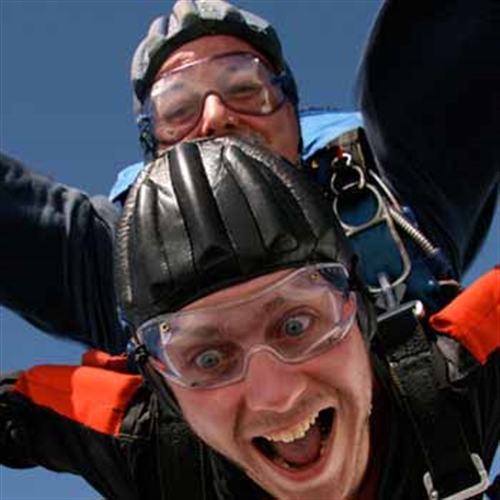

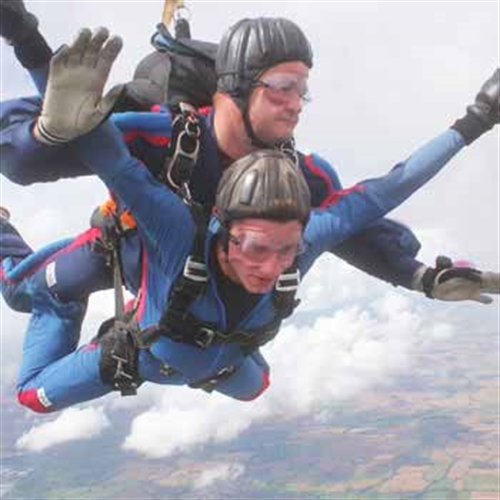
.jpg)
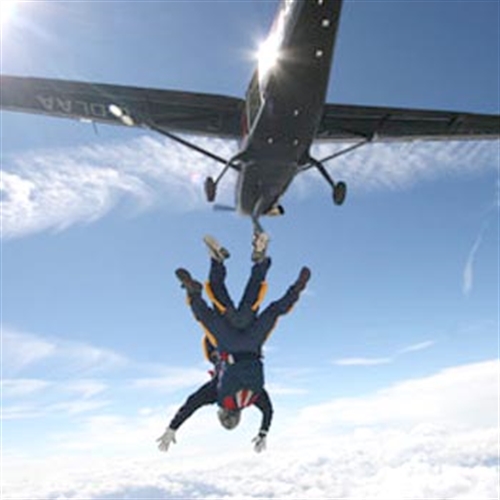

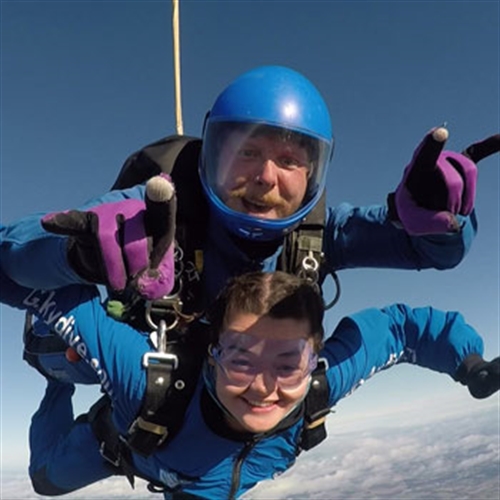
.jpg)
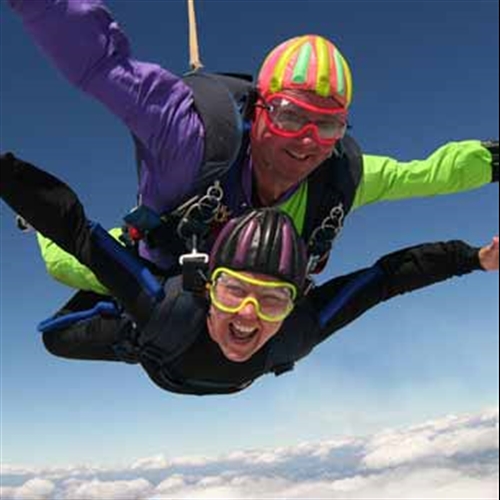
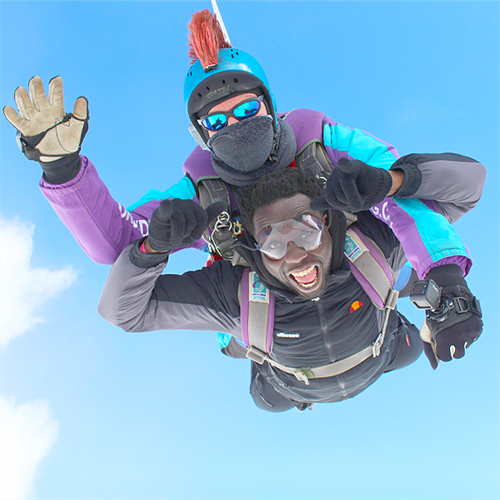
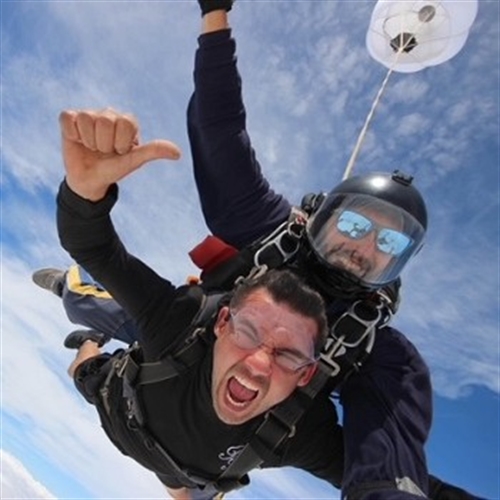

.jpg)
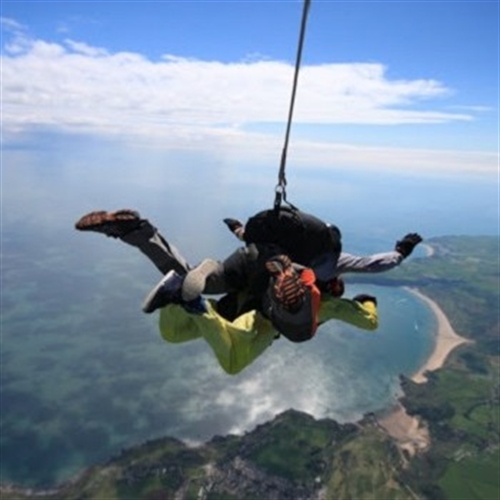
/IFLY---VR/~th-500x500/~th-crop-VRIFLY3-V350-DPI72-(1).jpg)


